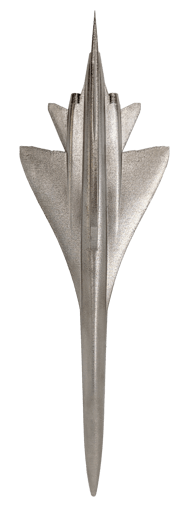 Metal AM gives engineers the opportunity to design higher performance parts with a much simpler manufacturing workflow than traditional manufacturing (think: rocket engines).But, in many cases, taller and larger parts will be no-bid or priced too high for the market. Why is that?
Metal AM gives engineers the opportunity to design higher performance parts with a much simpler manufacturing workflow than traditional manufacturing (think: rocket engines).But, in many cases, taller and larger parts will be no-bid or priced too high for the market. Why is that?
First of all, it is important to realize that taller builds have higher costs and associated risks: tall builds are expensive due to longer system run times (the main part cost contributor owing to machine depreciation), opportunity costs related to the relative scarcity of high-z printers, and operational expenses (higher gas, powder, and other consumables usage). In most cases the probability of failure also scales with z-height. This leaves the contract manufacturer with a tough choice, absorb the risk and significant cost of a failed print internally or pass it on to the end customer.
In order to deliver a part to a customer at a set point and time, a manufacturer might need to run multiple builds in parallel or budget more time to run a secondary build in series. To make up for these elevated production risks, manufacturers often avoid these opportunities.
But tall part risk is not the same for all AM printers. For example, the BOOM XB-1 model (right -->) was printed 280mm tall, SupportFree, free floating in powder. VELO3D engineers initiated the print from the nose and were able to extract the plane from the powder by hand. And not just one, we printed an entire squadron. This demonstrates VELO3Ds high level of confidence in completing tall and risky builds.
Let’s look at some of the issues that might surface during a tall part print and see how conventional metal AM systems compare to running that same part on a Sapphire®:
|
Issue |
Conventional AM |
VELO3D Sapphire Printer |
|
System calibration through build |
Many optical characteristics such as galvo mapping, spot size, focus mapping, etc. can shift over a long build. On modern multi-laser systems, the overlay between the two lasers is known to drift, amplifying the build risk on a tall part build. |
The Sapphire system overcomes this limitation through its ability to measure and recalibrate during a build, keeping the process window centered at all times.
|
|
Re-coater / power bed issues |
Powder bed streaks and powder short-feeds can occur during a build and cause the part to fail to meet spec. This can be particularly costly since this failure may not be detected until after a build is complete. |
The Sapphire’s noncontact re-coater eliminates the major cause of streaks which lead to yield issues. The Sapphire can correct streaks in-situ, while providing a report that shows the occurrence and corrective action taken. Inconsistent recoats (e.g., “short-feeding” of powder) are similarly diagnosed and addressed automatically. |
|
Support failures |
Residual stress accumulates during a build and, for a long build, may become large enough to cause support failures. This leads to part movement, and potential re-coater crashes or shift lines in the part that go undiagnosed until after the build. |
VELO3D deformation correction software is designed to predict failures due to stress accumulation and warn a user before the build even starts. During a build, the height mapper metrology can recognize support failures, prevent the re-coater from running into a part, and notify the operator of the error. |
|
Operational failures |
Many conventional systems weren’t designed for full-height builds. Even though the elevator may travel to a certain height, the other subsystems do not allow full-height builds without intervention. For example, in some systems the amount of powder in the tool is not sufficient to build to the quoted max Z height. An operator must pause the print and add more powder to the machine. Likewise, users must pause the build to empty the powder overflow container or change filters. Any pause can create a noticeable shift in the part or, worse, complete failure of the build. |
The Sapphire has enough powder to get through 2 full-height builds, and more powder can be added while a build is running. In addition, there is no powder overflow and the operator can hot-swap the filters during a build without affecting the part quality. |
|
Laser window contamination |
Laser window contamination can cause laser energy density at the build plane to vary as the build progresses. This can cause a shift in meltpool quality resulting in core porosity, surface defects, and lower mechanical properties like reduced fatigue life. |
Sapphire printers are designed to run for 3+ months without requiring a laser window preventative maintenance. In addition, Sapphire’s built-in metrology constantly tracks laser energy density and will notify the operator when cleaning becomes necessary. |
|
Facilities |
The other issue that compounds the risk of tall builds is that of the facility-side systems and their corresponding reliability. Power outages or inert gas shortages can easily kill a build, and the longer a build runs, the higher the probability becomes that one of these events might occur. Even voltage sags during summer months can cause machines to go into an error state. |
VELO3D addresses power quality issues by providing an optional on-board uninterruptable power supply (UPS). This UPS provides bridge power until facility backup systems come online or allows for a graceful shutdown in the case of extended outages without backup power. |
With VELO3D, we are putting opportunities, like tall parts, back on the build plan.




